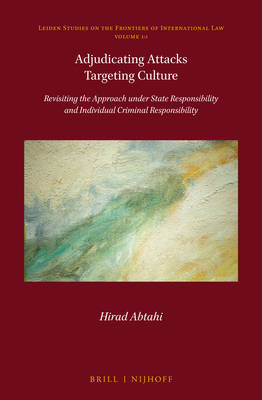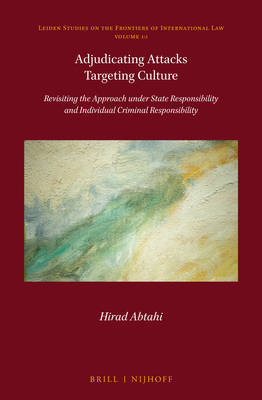
- Afhalen na 1 uur in een winkel met voorraad
- Gratis thuislevering in België vanaf € 30
- Ruim aanbod met 7 miljoen producten
- Afhalen na 1 uur in een winkel met voorraad
- Gratis thuislevering in België vanaf € 30
- Ruim aanbod met 7 miljoen producten
Zoeken
Adjudicating Attacks Targeting Culture
Revisiting the Approach Under State Responsibility and Individual Criminal Responsibility
Hirad Abtahi
€ 366,45
+ 732 punten
Omschrijving
This work proposes a toolkit for international legislators, judges and scholars to consider the adjudication of the causes, means and consequences of attacks targeting culture. Filling international law's gap regarding culture, this work views the latter as a legacy-oriented local-national-international triptych. Therein, culture can be anthropical or natural (fauna and flora), movable or immovable, secular or religious, tangible or intangible. Drawing from the practice of State responsibility and individual criminal responsibility-based jurisdictions, this work proposes a novel typology of the victims of cultural damage. These are natural persons as members of the collective, the collective as the sum of natural persons, and legal persons as a result of damage inflicted on them or their property. Based on the practice of both modes of responsibility's jurisdictions, this work considers attacks targeting culture as anthropo-centred, heritage-centred and/or tangible-centred.
Specificaties
Betrokkenen
- Auteur(s):
- Uitgeverij:
Inhoud
- Aantal bladzijden:
- 396
- Taal:
- Engels
- Reeks:
- Reeksnummer:
- nr. 10
Eigenschappen
- Productcode (EAN):
- 9789004533462
- Verschijningsdatum:
- 19/01/2023
- Uitvoering:
- Hardcover
- Formaat:
- Genaaid
- Afmetingen:
- 155 mm x 235 mm

Alleen bij Standaard Boekhandel
+ 732 punten op je klantenkaart van Standaard Boekhandel
Beoordelingen
We publiceren alleen reviews die voldoen aan de voorwaarden voor reviews. Bekijk onze voorwaarden voor reviews.











